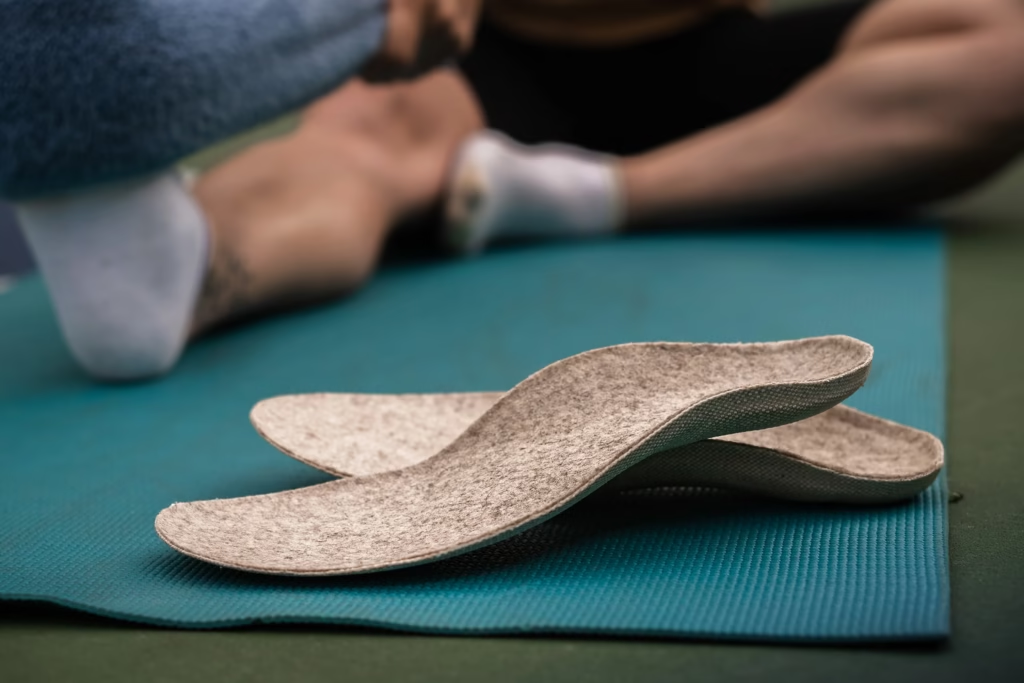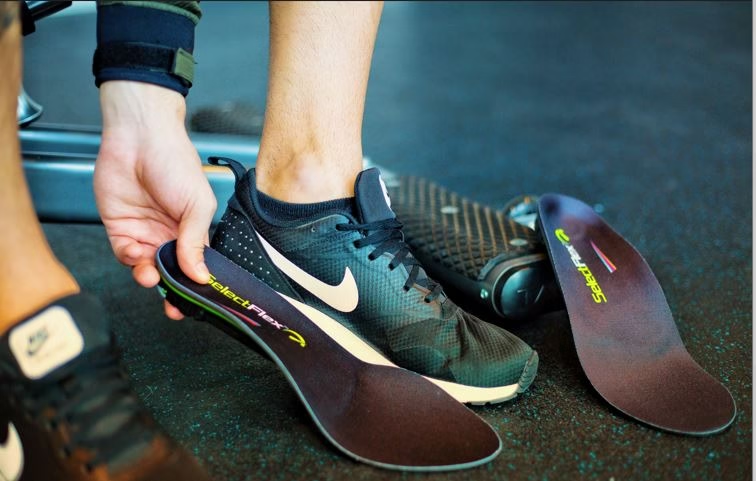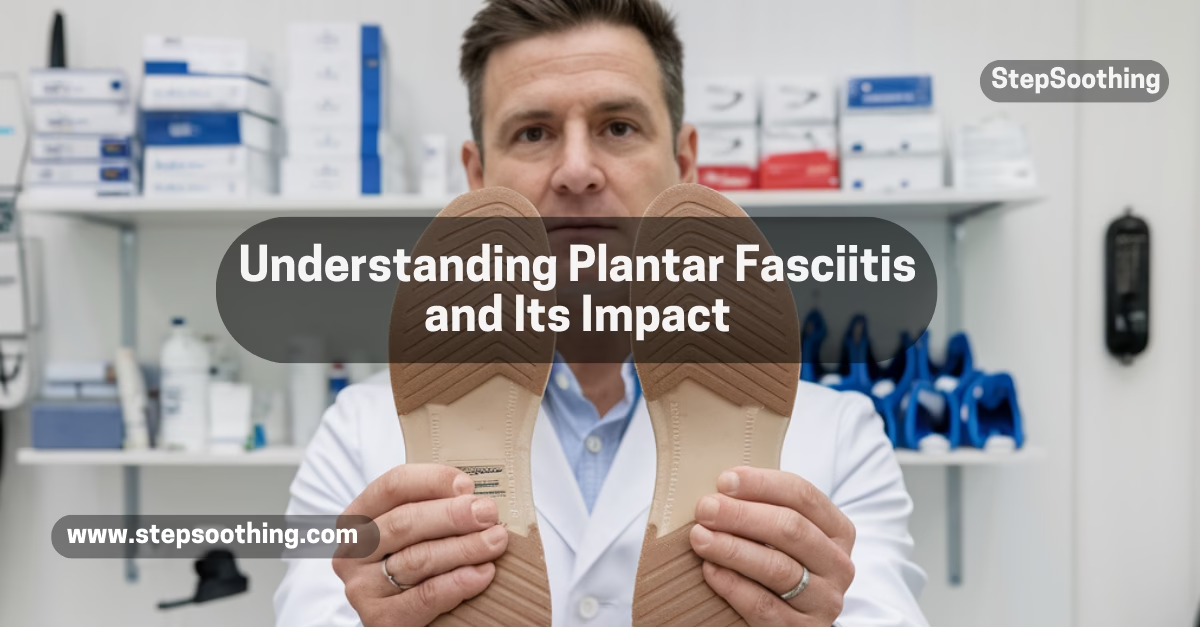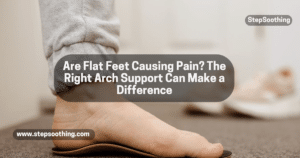Many people experience heel pain and arch pain without knowing the underlying cause. Plantar fasciitis is a common foot condition where the plantar fascia, a thick connective tissue on the bottom of the foot, becomes inflamed. This leads to sharp pain in the heel, especially in the morning or after long periods of inactivity. It affects people of all ages but is most prevalent among those between 40-60 years old and individuals who engage in activities like running, ballet, or aerobics.
The impact on daily life can be frustrating. Walking, standing, and even simple movements can feel unbearable. Without proper intervention, the pain may worsen, limiting mobility and affecting overall quality of life. Understanding this condition and how to treat it effectively is key to staying active and pain-free.
How Insoles Alleviate Plantar Fasciitis

Anatomy of the Plantar Fascia: A Closer Look
The plantar fascia is a band of connective tissue that stretches from the heel to the forefoot, supporting the arch of the foot. It acts as a shock absorber and stabilizer, helping distribute weight evenly across the foot while walking or running.
However, repetitive stress can cause inflammation and small tears in the fascia, leading to heel pain. Conditions such as flat feet, high arches, or improper foot mechanics can worsen the problem. Over time, the collagen fibers that make up the fascia break down, leading to chronic pain and discomfort.
Symptoms of Plantar Fasciitis: Recognizing the Signs
The hallmark symptom of plantar fasciitis is a stabbing pain in the heel upon waking up or after prolonged rest. This discomfort can also appear after standing for long hours or engaging in high-impact activities.
Other symptoms include morning stiffness, numbness, tingling, and tenderness in the arch or heel. In some cases, heel spurs develop as a result of chronic strain on the fascia, further exacerbating foot pain.
Related Article: Connection between Foot Health and Knee Pain
Diagnosing Plantar Fasciitis: What to Expect
A podiatrist typically diagnoses plantar fasciitis through a physical examination and a review of medical history. They assess the affected foot by pressing on the heel and arch to identify pain points.
In some cases, imaging tests like X-rays or MRIs are used to rule out other conditions such as fractures or heel spurs. If home treatments fail to provide relief, seeking medical advice is essential for proper management.
The Biomechanics of Plantar Fasciitis: Understanding the Root Causes
Certain biomechanical factors contribute to the development of plantar fasciitis. Pronation (rolling inward) and supination (rolling outward) affect weight distribution and put excess strain on the plantar fascia.
Individuals with flat feet or high arches are more prone to developing this condition. Tight calf muscles and a shortened Achilles tendon can also worsen symptoms by increasing tension on the fascia. Addressing these issues through proper arch support and stretching is crucial for relief.
Insoles for Plantar Fasciitis: How They Work
One of the most effective ways to manage plantar fasciitis is by using insoles that provide proper arch support and shock absorption. These insoles help by redistributing pressure across the foot, reducing strain on the plantar fascia, and minimizing heel pain.
By improving biomechanics and correcting foot misalignment, insoles prevent excessive stretching of the fascia. A well-designed insole provides cushioning and stability, allowing individuals to walk comfortably without aggravating their condition.
Related Article: Common Foot Problems and Solutions

Types of Insoles: Choosing the Right One for Your Needs
There are various types of insoles available, ranging from over-the-counter options to custom orthotics prescribed by a podiatrist. Each type serves a different purpose:
- Gel Insoles: Excellent for shock absorption and comfort.
- Foam Insoles: Provide cushioning and contour to the foot.
- Cork Insoles: Offer firm arch support for better weight distribution.
- Custom Orthotics: Designed to correct biomechanical issues and provide long-term relief.
Choosing the right insole depends on individual foot structure, activity level, and severity of symptoms.
Step-by-Step Guide: Selecting and Fitting Your Insoles
To maximize the benefits of insoles, selecting the right fit is essential. Start by determining your foot type and arch height. Many stores offer pressure mapping to analyze biomechanics and recommend suitable insoles.
Ensure that the insole matches your shoe size and fits snugly inside your footwear. Trimmed full-length insoles can be adjusted for a perfect fit. Wearing proper insoles regularly can significantly reduce plantar fasciitis symptoms and improve mobility.
Using and Maintaining Insoles: Tips for Longevity
New insoles should be broken in gradually to allow the foot to adjust. Start by wearing them for a few hours a day before transitioning to full-time use.
To prolong their lifespan, practice proper cleaning and maintenance. Wash foam or gel insoles with mild soap and air dry them. Replace worn-out insoles every 6-12 months to maintain cushioning and arch support.
Complementary Treatments for Plantar Fasciitis Relief
Along with insoles, additional treatments can aid in pain relief. Daily stretching exercises for the calf muscles and Achilles tendon help improve flexibility and reduce tension on the plantar fascia.
Ice therapy can soothe inflammation, while NSAIDs provide temporary relief from discomfort. In severe cases, corticosteroid injections or physical therapy may be recommended by a doctor.
Prevention Strategies: Keeping Plantar Fasciitis at Bay
Preventing plantar fasciitis involves making key lifestyle changes. Wearing supportive footwear with proper arch support prevents excessive strain on the fascia. Avoiding high heels and walking barefoot on hard surfaces can also reduce stress on the feet.
Maintaining a healthy weight lessens pressure on the plantar fascia, while regular exercise and stretching keep the foot muscles strong and flexible. Small adjustments in daily habits can prevent future flare-ups and ensure long-term foot health.
Related Articles : Are you concerned about your foot health? Visit Step Soothing to explore essential information foot health, Learn about Life-changing Arch Support for Flat Feet, Enhanced Comfort and Shock Absorption, Improved Foot and Ankle Alignment, Pain Relief, and more!
People Also Asked
How do insoles help plantar fasciitis?
Insoles work by providing arch support, shock absorption, and proper foot alignment, which help reduce stress on the plantar fascia. They cushion the heel, absorb impact, and prevent excessive strain that can lead to inflammation and pain. By correcting foot mechanics like overpronation or flat feet, they improve walking posture, evenly distribute weight, and reduce morning stiffness and discomfort caused by heel pain.
How long does it take for plantar fasciitis insoles to work?
Relief from plantar fasciitis insoles varies depending on severity, foot mechanics, and consistency of use. Many people notice a reduction in heel pain within a few weeks, but full recovery can take several months as the plantar fascia heals. Arch support, shock absorption, and pressure relief gradually decrease inflammation and stiffness, allowing for better mobility. Wearing insoles daily in supportive shoes speeds up recovery.
Are plantar fasciitis insoles worth it?
Yes, insoles are highly effective in reducing pain, improving arch support, and preventing further damage to the plantar fascia. They offer a non-invasive, cost-effective solution that enhances comfort, stability, and shock absorption during walking or standing. Custom orthotics provide tailored support, while over-the-counter insoles work well for mild cases. By relieving pressure on the heel, they significantly improve quality of life and prevent worsening symptoms.
What is the fastest way to heal plantar fasciitis?
Combining rest, ice therapy, NSAIDs, stretching exercises, supportive insoles, and night splints is the most effective approach. Plantar fascia and calf stretches help relieve tension, while heel cups and arch supports reduce shock impact. Avoiding barefoot walking on hard surfaces, replacing worn-out shoes, and using physical therapy or corticosteroid injections for severe cases can speed up recovery. Early intervention prevents long-term foot pain.
What is the best insole for plantar fasciitis?
The best insoles offer arch support, a deep heel cup, and reliable shock absorption. Custom orthotics provide personalized foot correction, but gel, foam, or cork insoles with plush cushioning and biomechanical support also help. Look for insoles with Shock Guard® Technology that reduce impact and pressure on the heel. The right choice depends on foot type, severity of pain, and daily activities, ensuring proper fit and comfort.



